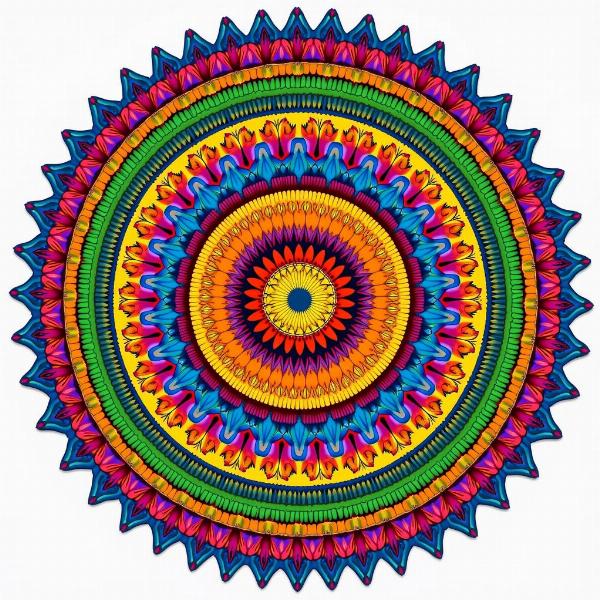Symmetry, a concept often encountered in art, architecture, and nature, holds a significant meaning in Hindi. Understanding its various interpretations enhances our appreciation of its cultural and linguistic significance. This article delves into the meaning of symmetry in Hindi, exploring its different facets and providing valuable insights into its usage and implications.
Exploring the Hindi Translations of Symmetry
The most common Hindi word for symmetry is समरूपता (samrūptā). This term beautifully captures the essence of symmetry, implying similarity in form, shape, or structure. It emphasizes the balanced proportions and harmonious arrangement of elements. Another word used is सममितता (sammititā), which specifically refers to the exact correspondence of parts on opposite sides of a dividing line or plane. Understanding these nuances allows for a more precise application of the terms in different contexts. Think of the intricate designs of a rangoli, the perfectly mirrored reflections in the Taj Mahal’s pools, or the balanced proportions of a traditional Indian thali. These examples showcase the deep-rooted appreciation for symmetry in Indian culture.
Symmetry in Indian Art and Architecture
Symmetry plays a crucial role in Indian art and architecture. From ancient temples to modern buildings, the principle of symmetry is evident in the meticulous planning and execution of designs. The symmetrical layout of temples, for instance, often symbolizes balance and harmony, reflecting the cosmic order. The intricate carvings and sculptures adorning these structures also frequently exhibit symmetrical patterns, adding to their visual appeal. This emphasis on symmetry not only enhances the aesthetic value but also imbues the structures with a sense of spiritual significance. Consider the versailles meaning in hindi, where symmetry also plays a significant role in its architecture.
The Philosophical Significance of Symmetry
Beyond its visual appeal, symmetry also holds philosophical meaning in Indian thought. The concept of balance and harmony, central to many Indian philosophies, is often represented by symmetrical forms. In Yoga, for example, symmetrical postures are believed to promote balance and stability, both physically and mentally. The mandala, a symmetrical geometric figure used in meditation, represents the universe and the interconnectedness of all things. This connection between symmetry and spiritual concepts highlights its profound influence on Indian culture.
 Symmetry in Mandala
Symmetry in Mandala
Symmetry in Everyday Life
Symmetry is not confined to art, architecture, and philosophy; it is also present in everyday life. From the symmetrical patterns on fabrics to the balanced arrangement of food on a plate, symmetry subtly influences our aesthetic preferences. The broque meaning in hindi can also be related to intricate details, which often involve symmetrical elements.
How do you say “perfect symmetry” in Hindi?
You can say “पूर्ण समरूपता” (pūrṇa samrūptā) which translates to “complete symmetry”. Alternatively, “परिपूर्ण सममितता” (paripoorṇa sammititā) can also be used to convey the same meaning, emphasizing perfect balance and correspondence.
What is the importance of symmetry in Indian culture?
Symmetry is highly valued in Indian culture, representing balance, harmony, and spiritual order. It’s prominently featured in art, architecture, religious rituals, and even everyday life, reflecting a deep-seated appreciation for aesthetic and philosophical principles. The dorsiventral meaning in hindi, while referring to biological asymmetry, highlights the importance of understanding different forms of structure and arrangement.
Conclusion
The meaning of symmetry in Hindi extends beyond its literal definition. It encompasses a range of cultural, philosophical, and aesthetic connotations that enrich our understanding of its significance. From the intricate designs of temples to the symbolic representation of balance and harmony, symmetry holds a special place in Indian culture. This appreciation for symmetry is reflected in the diverse vocabulary used to describe it, allowing for a nuanced understanding of its various forms and interpretations. Just as symmetry adds beauty and balance to art and architecture, it also contributes to a deeper appreciation of the interconnectedness and harmony within the universe, as understood in Indian thought. Considering the mutazad meaning in hindi, which refers to contrast, emphasizes the importance of symmetry as a counterpoint to asymmetry, further enriching its significance. The concept of equidistant meaning in hindi also relates to spatial arrangement and can be understood in the context of symmetrical designs.
Meaning-Hindi.in is your premier destination for professional Hindi translation services, catering to a wide array of needs, from business and legal documents to technical manuals and website localization. Our expert linguists ensure accurate and culturally sensitive translations, bridging the language gap between Hindi and other languages. Whether you need commercial translation, certified translation of legal documents, technical translation, website and software localization, educational and academic translation, or urgent translation services, Meaning-Hindi.in has the expertise to deliver high-quality results. Contact us at [email protected] or +91 11-4502-7584 for all your Hindi translation needs. Meaning-Hindi.in – your trusted partner for bridging linguistic and cultural divides.